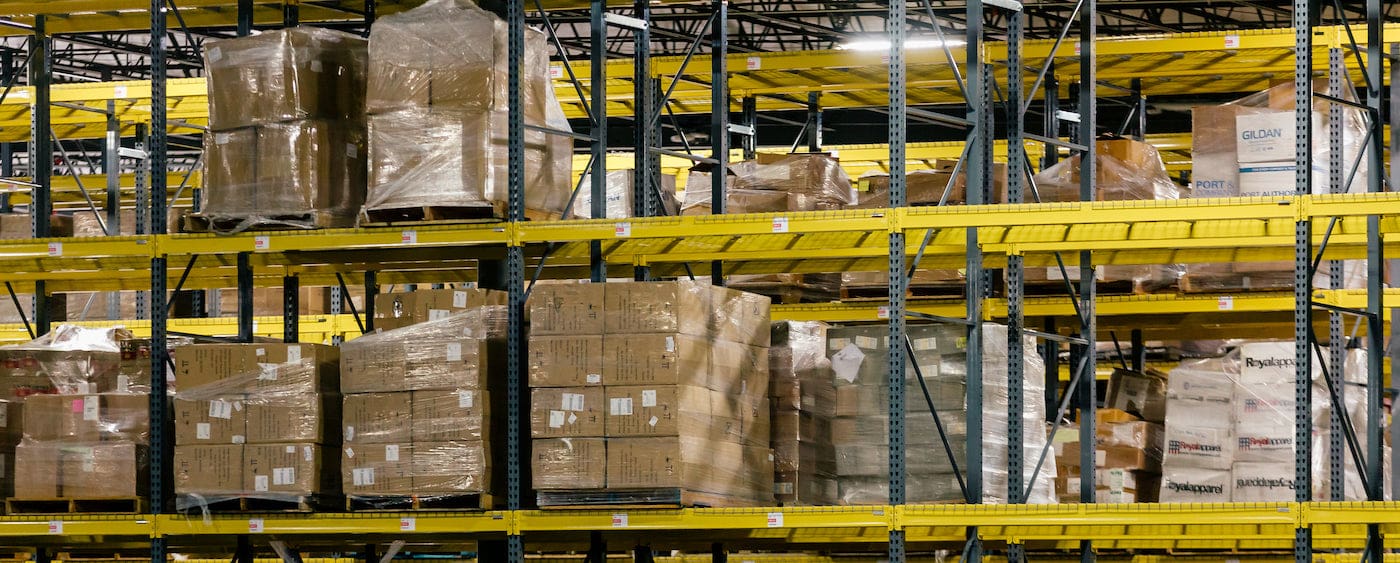Table of Contents
** Minutes
What causes demand volatility?
Can demand volatility be measured?
How do you predict demand volatility?
Demand volatility strategies to consider
If the past few years have taught us anything, it’s that consumer demand can fluctuate wildly — and quickly.
With the intense ups and downs of demand, switching up your supply chain management strategies fast enough to adapt to ever-changing consumer trends is tough.
That’s why these seismic shifts, known as demand volatility, are so challenging.
But with the right software monitoring crucial inventory metrics, you can be more proactive when it comes to demand volatility.
You can prepare for sudden surges (or drops) in demand. And you can improve inventory optimisation with the right amount of inventory available to meet demand.
The result? More revenue and a leg up on the competition.
What is demand volatility?
The definition of demand volatility refers to any variation in product demand that hits suddenly or unexpectedly.
While demand volatility has many causes, changing consumer expectations are most often the culprit. Today, customers want retailers to provide a wide product selection at a low cost. And they expect those products to be available when they want them.
According to Forrester researcher published on Forbes.com, shoppers will continue to spend money but will be more selective in 2023. In other words, your customers want to squeeze the most value from their purchasing experience.
Additionally, having endless options in terms of product price, choice, and availability really puts the consumers in the driver’s seat (rather than manufacturers or retailers).
Customers are now the ones who dictate manufacturing schedules based on their buying habits. And you need to always have the right SKUs on hand to meet these expectations.
A perfect example is the notorious toilet paper shortage in the early days of the COVID-19 pandemic.
As millions of people suddenly panic-bought toilet paper in bulk, shelves sat empty as manufacturers struggled to adjust their forecasts and produce more inventory.
In short, greater customer influence (and control) is a driving force behind demand volatility. Customers can (and do) change their preferences—buying more or less of your products—ultimately creating an unpredictable situation for fulfilment.
What causes demand volatility?
As we pointed out, shifting shopper preferences and trends are a major factor in demand volatility these days. But that hasn’t always been the case, nor is it the only driver for shifts in demand.
Traditionally, supply chain processes used a push-driven strategy, where products move through the supply chain from production to the retailers. With this approach, production is based on demand forecasts and retailers get products before a customer orders them.
These days, ecommerce supply chains are slowly becoming pull-driven (or demand-driven). In a pull-driven supply chain, production and distribution are guided by actual customer demand. That is, retailers only order inventory as needed to meet customer demand.
But here’s the thing: Neither strategy is perfect.
Push-driven supply chains can leave your brand overstocked (like Adidas not being able to offload its Yeezy merchandise) and wreck your margins in a big way. Meanwhile, pull-driven strategies are harder to wrangle as demand grows increasingly volatile.
While there are lots of reasons for volatility within pull-driven supply chains, two of the biggest culprits are changing customer expectations, as we mentioned, and the lingering effects of the pandemic.
Changing customer expectations
Today’s customers want a variety of products to choose from at the lowest cost possible, and they want them now. But customer demands weren’t always as “demanding” as they are today.
Customers of the past didn’t emphasize convenience and on-demand product stock availability as much as modern shoppers.
Unfortunately, a pull-driven supply chain has a hard time keeping up with these constantly evolving expectations. After all, customers change their minds faster than most supply chains can adapt.
What happens when supply chains can’t keep pace with demand volatility? You’ll start to see plenty of backlogs in shipping and fulfilment.
That’s why employing robust supply chain strategies that adapt to demand volatility from the start is so important.
Impact of the pandemic
To put it lightly, retailers have gotten a serious case of whiplash in the last few years.
Shortages and shuttered factories (mostly due to the pandemic) forced push-driven retailers to quickly move to a pull-driven approach (and vice-versa).
When the lockdown was in full effect in 2020, companies selling cleaning supplies and disinfectants couldn’t keep stock on their shelves due to high consumer demand.
On the flip side, companies selling non-essential goods were left with tons of unsold inventory as demand for their products plummeted.
Even companies that built resilient supply chains saw stockouts and supply chain bottlenecks galore. Meanwhile, supply chain teams tried to amp up their manufacturing amid massive labour shortages.
While many argue that the pandemic has made customers more forgiving about stockouts and shortages, the point is that disruptions still plague brands.
So, what can retailers (and distributors) do about it? Start by measuring how much demand volatility your brand is susceptible to.
Can demand volatility be measured?
Even though demand volatility can be measured, it’s not easy or always 100% accurate.
Understanding demand volatility requires more than your available internal data. You’ll also need to look at a variety of external factors:
- Market shifts and global events
- Consumer attitudes (what’s trending)
- Availability of alternatives
Each of these events impacts demand volatility somewhat, so you’ll need to review them to understand what demand is really doing.
For instance, in the last year, inflation hit a 40-year high. Based on this, you’ll have to consider:
- How have your customers responded?
- Have you raised your prices?
- If so, what happened when you did?
- If you didn’t, did you see demand increase with inflation? Decrease? Stay the same?
Analising these ebbs and flows shed light on where demand spiked, how quickly, by what percentage, and even what drove the change.
That said, measuring external factors can be incredibly complex and often produces weak correlations (versus causations).
That’s why, most of the time, it’s better to get ahead of demand volatility in the first place, so you don’t have to worry about constantly analising its effects.
How do you predict demand volatility?
While demand volatility won’t ever be entirely predictable, you can take some steps to forecast volatility.
Most brands either use the coefficient of variation or some form of scenario inventory planning to estimate demand volatility.
Coefficient of variation
For starters, you can use the coefficient of variation (CV) to measure volatility in demand since the formula assesses the predictability of the market.
More simply, the CV tells you how accurately you can forecast demand.
The formula for the coefficient of variation looks like this:
CV = (standard deviation ÷ mean)
Standard deviation measures how dispersed your data is in relation to the mean. A low standard deviation is when data is clustered around the mean.
In contrast, a high standard deviation is when your data is more spread out.
Sound complicated? Let’s walk through it. Say two T-shirt brands want to measure their volatility based on weekly sales.
- Awesome T-Shirt Co: Mean Weekly Sales = $4,000, Standard Deviation = $1,500
- Mom and Pop T-Shirts Inc.: Mean Weekly Sales = $8,000, Standard Deviation = $2,000
Now, let’s plug the numbers for each company into the coefficient of variation formula:
- CV for Awesome Co.: $1,500 ÷ $4,000 = 0.375 (or 37.5)
- CV for Mom and Pop: $2,000 ÷ $8,000 = 0.25 (or 25)
Since Mom and Pop T-Shirts has a lower CV, the brand has lower volatility in weekly sales compared to Awesome T-Shirt Co. So, Mom and Pop can predict their weekly sales more accurately than Awesome T-Shirt Co.
The higher your CV, the less reliable your demand forecasts become.
Scenario planning
Another option to help predict demand volatility is scenario planning. In essence, scenario planning requires some creativity and a lot of long-term thinking to deal with uncertainty.
In practice, this is where you identify a range of potential outcomes and realities that might happen to your business in the future. Then, you can consider different responses and plan for several possible results.
For instance, farmers use scenarios to predict whether their harvest will be good or bad, depending on the weather. Even if you aren’t growing vegetables, you can apply this approach.
By visualizing different risks and opportunities, your business can be more proactive in its decision-making (rather than reacting to events as they happen).
In other words, by building awareness around what could happen, you can spot the warning signs of upcoming issues and respond accordingly.
When a worst-case event comes up, scenario planning plays out multiple outcomes and lists immediate steps you can take to contain the damage. That said, you can also create these plans for best-case scenarios — like when a product goes viral, and demand spikes 300% overnight.
It might sound pretty simple, but scenario planning is probably one of the best methods to guide your business in the long term.
Using robust demand planning software (like Cogsy) makes scenario planning even more effective. These platforms use machine learning to generate “what-if” scenarios.
Meaning, you can model how changes in inventory levels or production schedules affect your ecommerce KPIs, cash flow, and ability to meet demand.
Such software ensures you’re more prepared for all types of situations, so you can quickly adapt to changing conditions (and demand volatility) without panic and hassle.
Demand volatility strategies to consider
Some of the best ways to cut down on demand volatility are accurate demand forecasting, scalable planning, “what-if” scenarios, and a diversified supply chain.
Demand forecasting
In an ideal world, you’d always accurately predict customer demand instead of scrambling to respond to it. But accurate forecasting is difficult (borderline impossible?) when dealing with ever-changing supply chain issues and an unpredictable market.
Fortunately, integrating ShipBob’s fulfilment platform with Cogsy makes demand forecasting a whole lot easier. With these platforms working together, you can parse patterns in demand and tease out correlations in your data (that most demand planners might miss).
ShipBob and Cogsy leverage real-time and historical data to inform your demand forecasts. This way, you can loop in past demand trends (and previous forecasts) to better prepare for any future volatile events.
“We went viral again in January of 2021, after Food Huggers appeared on The Today Show. Our order volume just exploded! In the first week alone, it increased 786% compared to our previous weekly average. It was a tight, tight crunch — but thanks to ShipBob, we were able to keep up with the crazy demand no problem, and fulfil 97.3% of the orders on time!
Even after the initial spike that led to a continued increase in orders, ShipBob maintained a 98.2% OTIF rate for the whole month of January (meaning that 98.2% of orders were delivered on-time and in-full) which helped us achieve 497% growth in sales month over month.”
Juliana Brasil, Director of Operations at Food Huggers
While demand planning will never be 100% accurate, working with ShipBob and Cogsy can get your forecasts as close to perfection as possible.
Better yet, Cogsy automatically updates your demand forecasts as new information becomes available. These real-time updates improve your inventory accuracy numbers much more since your predictions are always based on the most up-to-date details.
And Cogsy can even factor marketing events, new product launches, and subscriptions into your demand forecasts. How’s that for being better prepared?
Scalable planning
Another way to manage demand volatility is to implement scalable planning. These flexible processes allow your team to readily increase (or “scale up”) their output—like keeping up with higher order volumes brought on by demand volatility.
In simpler terms, scalable planning allows you to ramp up (or reduce) production and fulfilment as needed. With proper scalability, you can adjust your logistics and control overhead costs based on anticipated volume.
What’s more, scalable planning can withstand all sorts of stressors within the supply chain (think: shipping delays and raw materials shortages). With flexible plans, you have more room to pivot and adjust whenever you uncover new information.
So, how do you use scalable planning for your own brand? Take advantage of cloud capabilities and integrated digital systems that aren’t cramped by hardware infrastructure. By utilising a colocation data centre, you can easily and quickly scale up your digital infrastructure without the burden of managing physical hardware, making it a cost-effective and flexible solution for supporting scalable planning.
The great thing about digital systems is that they can scale infinitely with your brand. Local sales can turn into international revenue, and volatile demand can be the beginning of major growth.
Think “what if”
“What-if” thinking is an extension of scenario planning (which we talked about above). When you plan in a what-if environment, you can prepare for unknown situations.
Meaning, you can test the potential impact of changes to replenishment and production schedules without causing any additional supply chain disruptions. You can model how changes to your inventory levels or manufacturing processes will impact your KPIs (and then figure out ways to minimise any damage).
What you’re really trying to do is consider all possible scenarios so you can get ahead of demand volatility before it happens. Cogsy can help with all of this, as well.
Cogsy supports you in running “what-if” scenarios to identify your best-case, worst-case, and most probable inventory management strategies. That way, you avoid expensive mistakes (like stockouts and dead stock) that prevent you from meeting demand and reaching your revenue goals.
Diversify your supply chain
Maintaining relationships with only a handful of suppliers can sometimes work to your benefit (like securing a better rate by doing more business with each supplier).
But it can also present challenges when you experience product shortages and stockouts due to issues with those few vendors. In this situation, you’re out of luck if those few providers don’t have the products you need.
Plus, suppliers with limited production capacity might not have the bandwidth to accommodate additional production if customer demand spikes.
But diversifying your supply chain distributes your manufacturing and production across more vendors. This means you’ll have an easier time meeting increased demand.
Along those same lines, if your brand works with overseas suppliers, try partnering with local suppliers instead.
Partnering with a domestic supplier can automatically reduce your lead times by several weeks (compared to shipping from a foreign country). This way, volatile demand won’t be exacerbated by making customers wait forever for orders.
If you switch suppliers, just ensure you have enough safety stock to carry you through the changeover.
“ShipBob’s software helped us better understand where we should grow next. In the beginning, it was difficult to easily calculate how much we were selling in each region. ShipBob’s ideal distribution algorithm enabled us to see not only where our customers were based, but where we should allocate inventory to best meet demand.”
Natalia Lara, CMO of Oxford Healthspan
How ShipBob and Cogsy help with demand forecasting
Unreliable supply chains and unpredictable demand are the reality of modern retail. These days, ecommerce brands are operating under a lot of uncertainty as they try to improve supply chain operations, meet customer expectations, and maintain their cash flow.
But that’s exactly why ShipBob and Cogsy joined forces — to help you confidently tackle demand forecasts and provide the clarity you need to unlock future growth.
The integration with ShipBob and Cogsy gives direct-to-consumer (DTC) brands access to real-time metrics so you can continuously monitor your stock levels. These metrics are updated 24/7. This allows you to forecast production and demand with pinpoint accuracy.
Specifically, ShipBob’s fulfilment platform automatically tracks key supply chain metrics for you (so you can ditch all that tedious spreadsheet work).
From there, Cogsy steps in to help you make sense of this data to discern what these numbers are trying to tell you. Cogsy even turns your static data into robust, actionable insights that inform your forecasting and production.
Together, ShipBob and Cogsy create a powerful source of truth so you can keep a close eye on all your inventory KPIs and know exactly how to leverage those insights to improve forecast accuracy and overcome demand volatility.
Learn more about the ShipBob + Cogsy integration or connect with the ShipBob team for further details. For more info on Cogsy, visit their website.
Demand volatility FAQs
Below are answers to some of the most common questions about demand volatility.
What is demand variability?
Demand variability is the difference between what you expect to happen and what actually happens with consumer demand. Simply put, demand variability measures the degree to which customer demand doesn’t align with your forecasting predictions.
What is a good measure of volatility?
The coefficient of variation (CV) is a good measure of volatility since this calculation tells you how accurately demand can be forecasted. The higher your coefficient of variation, the less accurate (and reliable) your demand forecasts become. Generally speaking, a CV between 20-30 is acceptable for forecasting, while a CV above 30 is considered unacceptable.
How can demand variability be reduced?
Some of the best ways to reduce demand variability are accurate demand forecasting, scalable planning, what-if scenarios, and a diversified supply chain. More than that, you can use operational software to support your demand forecasting and transform your static data into robust, actionable insights (that inform production).



